Forex Crunch GBP/USD Outlook – July 19-23 |
- GBP/USD Outlook – July 19-23
- EUR/USD Outlook – July 19-23
- USD/CAD Outlook – July 19-23
- AUD/USD Outlook – July 19-23
- NZD/USD Outlook – July 19-23
| Posted: 18 Jul 2010 04:26 AM PDT The initial release of GDP, meeting minutes and retail sales are part of the events that will rock the Pound in a busy week. Here’s an outlook for the British events and an updated technical analysis for GBP/USD. GBP/USD daily chart with support and resistance lines marked. Click to enlarge: The Pound got out of the range it was stuck in, and made a move forward, enjoying another impressive drop in unemployment. It failed to break an important resistance line. Will it happen this week? Let’s start:
GBP/USD Technical Analysis The Pound fell at the beginning of the week, trading between 1.4950 and 1.5130. When it moved forward, the move was strong. The pair settled above 1.5220 and then jumped above 1.5350. After failing to reach 1.5520, GBP/USD lost the 1.5350 support line and closed at 1.5291. Some lines have changed since last week’s outlook. The Pound now ranges between 1.5350, which was a pivotal line back in April, and 1.5220, which served as a strong resistance line in recent weeks, and now works as a support line. Looking down, the next minor support line is 1.5130, which was a support line in April. The next line is 1.4950, which supported the pair in the past week, and also had the same role in March. Lower, 1.4780 held the Pound before it collapsed in May, and then worked as a resistance line. There are many lines below until the year-to-date low of 1.4230. Looking up, 1.5350 returns to its role as a pivotal line. Above, 1.5520 is a very strong line of resistance. It worked as such many times in April and May. Higher, 1.57 provided support for the pair in 2009, and is now a minor line of support. Above, 1.5833 worked in both directions at the beginning of the year, and provides a strong line of resistance now. The next line of support it 1.6080, quite far at the moment. I am neutral on GBP/USD. The improving employment situation in Britain, together with the inflation that is still high, balances the debt issues and the fear of a double dip recession. Further reading:
Want to see what other traders are doing in real accounts? Check out Currensee. It's free.. |
| Posted: 18 Jul 2010 01:26 AM PDT After the recent rally, a busy week expects Euro/Dollar traders. Apart from many important indicators, Friday’s stress tests are critical for the Euro. Here’s an outlook for the European events and an updated technical analysis for EUR/USD, now in higher ground. EUR/USD daily chart with support and resistance lines marked. Click to enlarge: The Euro continued riding on the greenback’s weakness in the past week, and disregarded a credit downgrade for Portugal. Currently, German strength holds the Euro-zone. Will this continue? Let’s start:
EUR/USD Technical Analysis Euro/Dollar continued struggling with the 1.2672 line at the beginning of the week. It later made a convincing break above this line and then continued above 1.28 (a new line that didn’t appear on last week’s outlook) and managed to cross 1.2880 before closing at 1.2927. The pair is now bound between 1.2880, which was a support line back in May 2009 and the round number of 1.30 which it tackled in the past week. Looking up, a significant line of resistance appears at 1.3110. EUR/USD was supported on this line before it collapsed, and found resistance at that point after the collapse. Higher, 1.3267 was another strong line of support that turned into a resistance line now. Above, 1.3435 had the same role of a support line at the beginning of the year and serves as the next resistance line. 1.37 was a resistance line in April, and is the final resistance line for now. Looking down, 1.28 provides immediate support, working as a resistance line in the past week. Lower, the previous resistance line of 1.2672 is a strong line of support. Lower, 1.2520 is a minor line of support, followed by the stronger 1.2460 which held the pair before the recent rally. The significant lines below are 1.2150, which was a clear line in both directions and 1.20. I am neutral on EUR/USD. The convincing break of 1.2670 and the worsening conditions in the US send the Euro up. While the situation in Europe hasn’t significantly improved, these rises cannot be ignored. The stress tests results on Friday will be very important for the debt crisis and the Euro. I think that the pair will trade in a range till then. This pair receives excellent reviews on the web. Here are my favorites:
Further reading on Forex Crunch:
Want to see what other traders are doing in real accounts? Check out Currensee. It's free.. |
| Posted: 18 Jul 2010 12:24 AM PDT Loonie traders expect a busy week, with important releases every day of the week, with the rate decision being the main highlight. Here’s an outlook for the Canadian events, and an updated technical analysis for USD/CAD. USD/CAD daily chart with support and resistance lines marked. Click to enlarge: The Canadian dollar continued enjoying the superb employment figures that we’ve seen in the previous week. It will be interesting to see how jobs impact the rate decision, but there are other factors as well. Let’s start:
USD/CAD Technical Analysis Tight range trading characterized the pair at the beginning of the week. USD/CAD traded between 1.0280 (a new line that didn’t in appear in last week’s outlook) and 1.04. Towards the end of the week, USD/CAD made a breakout to the upside, and it finished at 1.0571, just above the 1.0550 line. The pair now ranges between the 1.0550 line it just broke (a minor line) and 1.0680 which served as a stubborn line of resistance earlier this month and also at the beginning of June. Higher, 1.0750 was the top border of a long-term range, and also served as resistance in May. Above, 1.0850 was a swing peak back in 2009 and had the same functionality just in May. The final line is 1.1130 which was a double top in the past. Looking down below 1.0550, the next line of support is 1.04, which worked as a line of resistance during most of last week. Lower, 1.0280 is the next line, and it’s followed by 1.02, which was the 2009 low and also worked as resistance when the pair traded lower. On the way down, there’s a minor area of resistance at 1.01, and it’s followed by the ultimate line of support – parity. I remain bearish on USD/CAD. The strength of the Canadian economy and the expected rate hike in the upcoming week should give a boost to the loonie. Further reading:
Want to see what other traders are doing in real accounts? Check out Currensee. It's free.. |
| Posted: 17 Jul 2010 10:31 AM PDT Four events await Aussie traders in the upcoming week. Here’s an outlook for these events and an updated technical analysis for AUD/USD. AUD/USD daily chart with support and resistance lines marked. Click to enlarge: Australia’s home loans finally rose. This positive figure joined the employment figures we’ve seen beforehand and boosted the Aussie.
AUD/USD Technical Analysis After tight range trading between 0.8660 and 0.8770, AUD/USD made a break and peaked at 0.8870. It then collapsed and closed at 0.8660, which is turns into a pivotal line. Note that some of the lines have changed since last week’s outlook. From the close at the support / resistance line, the Aussie can go back up and make another attempt towards 0.8770, which provides immediate resistance. Stronger resistance is found at 0.8915 which worked as a support and resistance line many times in the past. Higher, the round number of 0.90 is the next resistance line, and it’s followed by 0.9135 which served as a support line in April. Even higher, the next significant resistance line is 0.9327, which was a resistance line during many months. Looking down, 0.8567 continues to be an important line of support. It worked as such when the Aussie was trading higher last year, and worked as a resistance line after the pair plunged. Lower, 0.8500 is a minor line of support. Also 0.8390 is a minor line, and it’s followed by 0.8315, which was a double bottom recently. Even lower, there are many lines. 0.8240 is a minor line, and it’s followed by the year-to-date low of 0.8066. I remain bullish on the Aussie. The Australian fundamentals, including the strong job market and also the recovering housing sector, continue to shine on Australia. Further reading:
Want to see what other traders are doing in real accounts? Check out Currensee. It's free.. |
| Posted: 17 Jul 2010 07:31 AM PDT This week’s isn’t too busy with indicators, so the technicals will play a significant role in the kiwi’s trading. Here’s an outlook for the events in New Zealand and an updated technical analysis for NZD/USD. NZD/USD daily chart with support and resistance lines marked. Click to enlarge: Retail sales disappointed once again in New Zealand, hinting that the rates could rise more slowly than expected. Nevertheless, the kiwi is enjoying risk aversive trading and it’s rising. Let’s start:
NZD/USD Technical Analysis The kiwi began the week with some range trading, and then made a breakout and rose above 0.7160. An attempt to reach the strong resistance line of 0.7325 failed, and the pair fell sharply towards the end of the week to close at 0.7102. Note that some lines have changed since last week’s outlook. NZD/USD now trades between 0.7160 and the round number of 0.70, which provides strong support. Looking down, 0.6910 served as a strong line of resistance in May and also last August and now works as support. Below, 0.68 provided support a few weeks ago and also in February and works as a strong line of support. There are more lines below, but the most significant one worth mentioning is the year-to-date low of 0.6560. Looking up above 0.7160, the next line is 0.7325, that proved itself in the past week. Higher, 0.7440 worked as a stubborn line of resistance at the beginning of the year, and will cap the kiwi if it breaks above 0.7325. Even higher, 0.7520 was a peak in November, and it’s followed by 0.7630, which was the highest level since the outbreak of the financial crisis. I remain bullish on NZD/USD. Despite worsening global conditions, the economy in New Zealand is doing well, and the rising interest rates attract investors, creating a potential for further rises. Further reading:
Want to see what other traders are doing in real accounts? Check out Currensee. It's free.. |
| You are subscribed to email updates from Forex Crunch To stop receiving these emails, you may unsubscribe now. | Email delivery powered by Google |
| Google Inc., 20 West Kinzie, Chicago IL USA 60610 | |

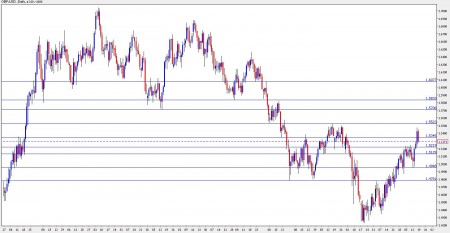
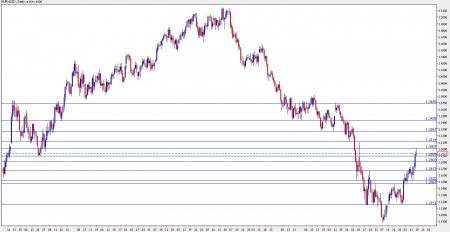
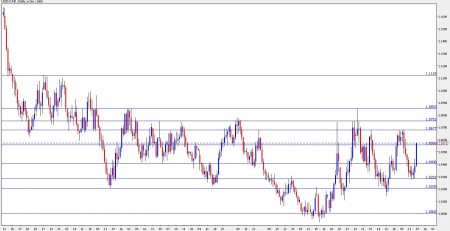
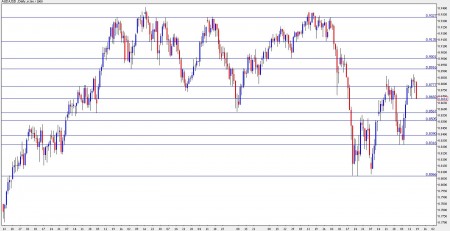
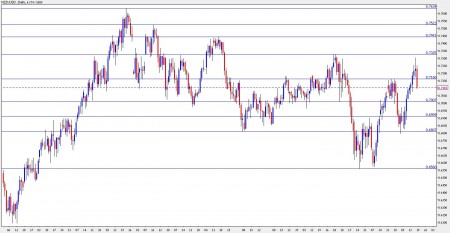
No comments:
Post a Comment